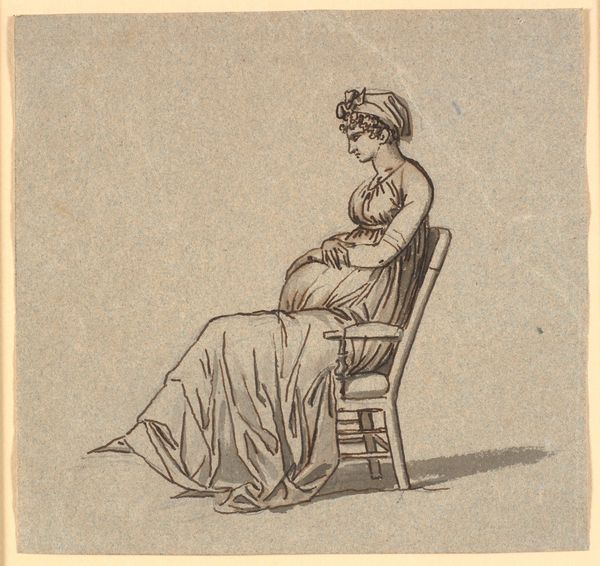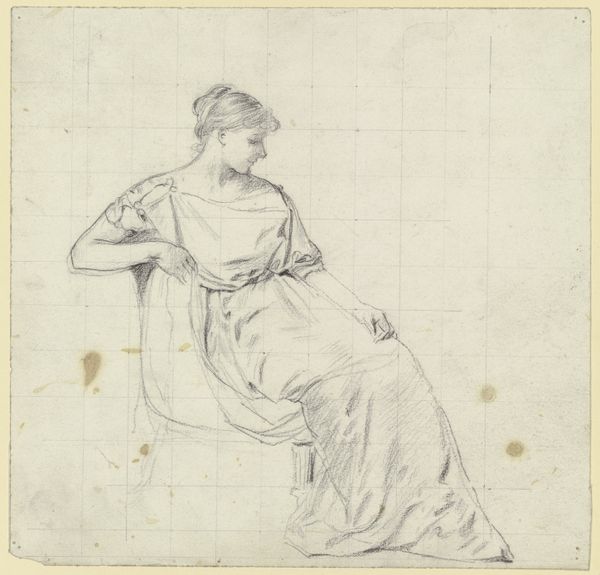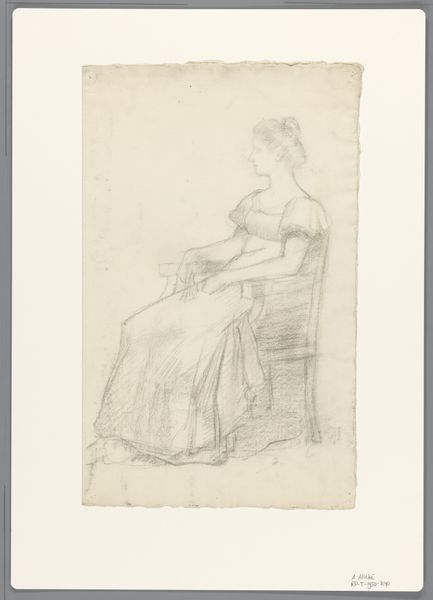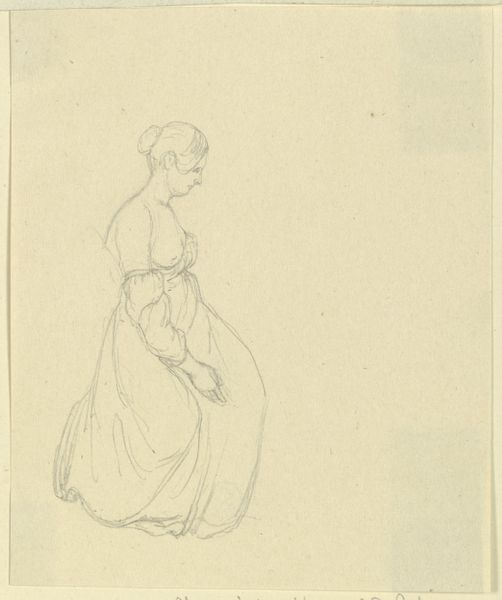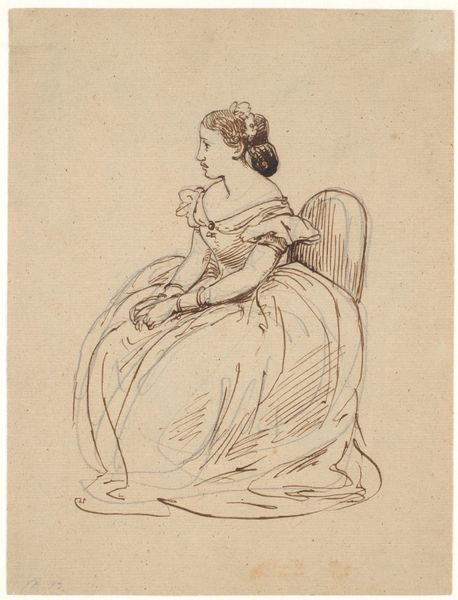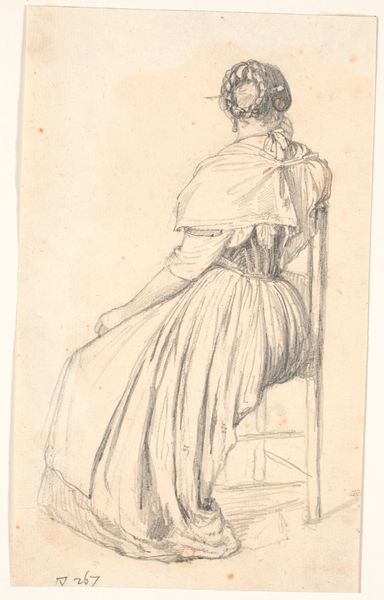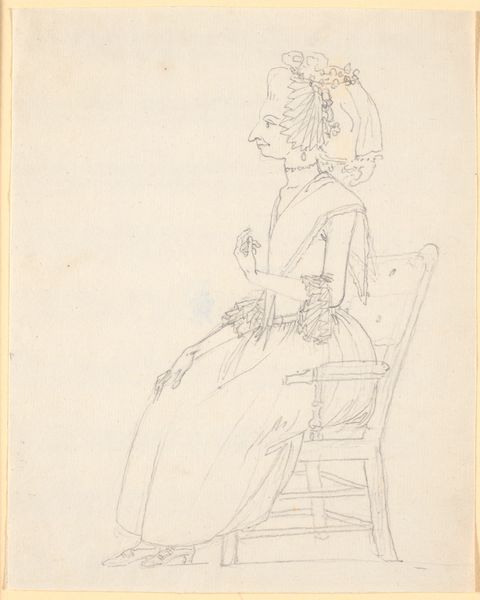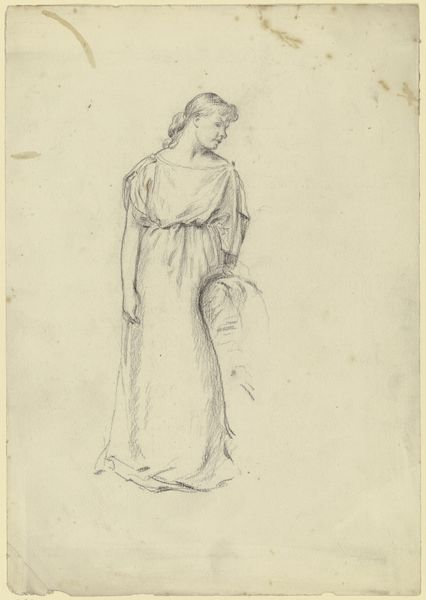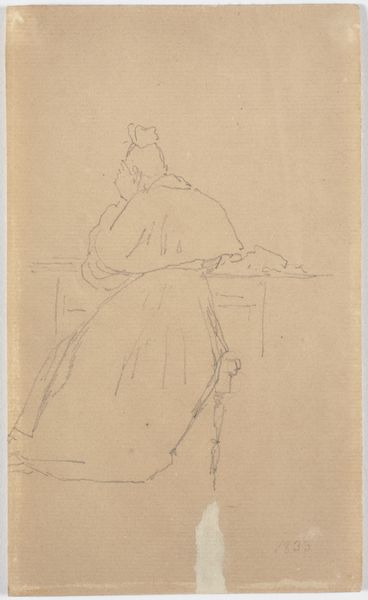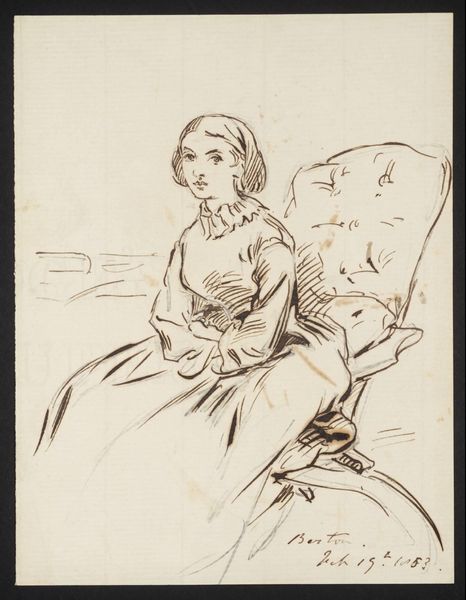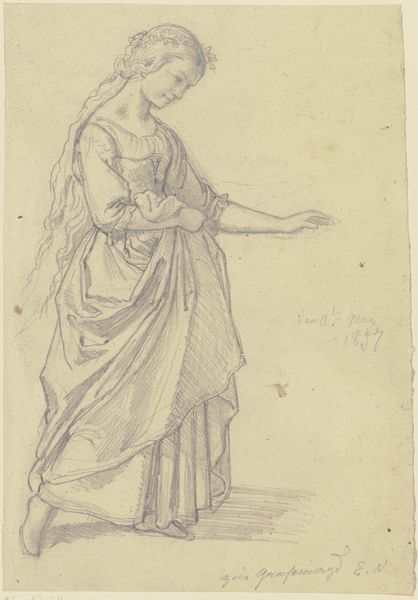
Profilbillede af kunstnerens anden hustru Juliane Marie Abildgaard, siddende, hel figur 1803 - 1809
0:00
0:00
drawing
#
portrait
#
drawing
#
academic-art
#
realism
Dimensions: 215 mm (height) x 201 mm (width) (bladmaal)
Curator: Welcome. Before us, we see Nicolai Abildgaard's drawing from the early 19th century, dating between 1803 and 1809. It’s titled "Profilbillede af kunstnerens anden hustru Juliane Marie Abildgaard, siddende, hel figur," which translates to "Profile portrait of the artist's second wife Juliane Marie Abildgaard, sitting, full figure.” Editor: My first impression is one of calm reserve, almost stoicism. The restrained use of line and the pale tonality create a sense of quiet dignity. Curator: Indeed. Abildgaard employs a masterful, academic approach to realism. Observe the delicate hatching, used with great economy. The structural elements—the precise rendering of her dress, the chair—reveal his meticulous attention to form and composition. Editor: And the pose… hands clasped demurely in her lap, averted gaze. It's fascinating how a posture can convey so much about the subject's societal position. It echoes conventions for portraying women from this period; there’s a sense of restraint, hinting perhaps, at the limitations placed upon women. Curator: Agreed. Symbolically, her seated pose reinforces stability and permanence, ideas further expressed by her firm, clasped hands, denoting domesticity and submission. The bareness of the background emphasises this further, creating a void which centers only on the wife. Editor: The plainness also invites us to concentrate on Juliane herself. Consider the symbolism of clothing too, specifically of the headscarf wrapped above her hair. The scarf, although plain, acts as both a framing structure around her face, but also obscures her features from display. Her hidden face presents the iconographic value of 19th century ideals, whereby women did not fully embody free expression in the way that males were given. Curator: Certainly. One can discern a dialectical play between external expectation and interiority – between objective realism and an expression of her individual status. Even this sketch tells us as much. Editor: What an interesting confluence of form, materiality and symbolic nuance. Curator: Precisely; a quiet portrait of structural brilliance!
Comments
No comments
Be the first to comment and join the conversation on the ultimate creative platform.
